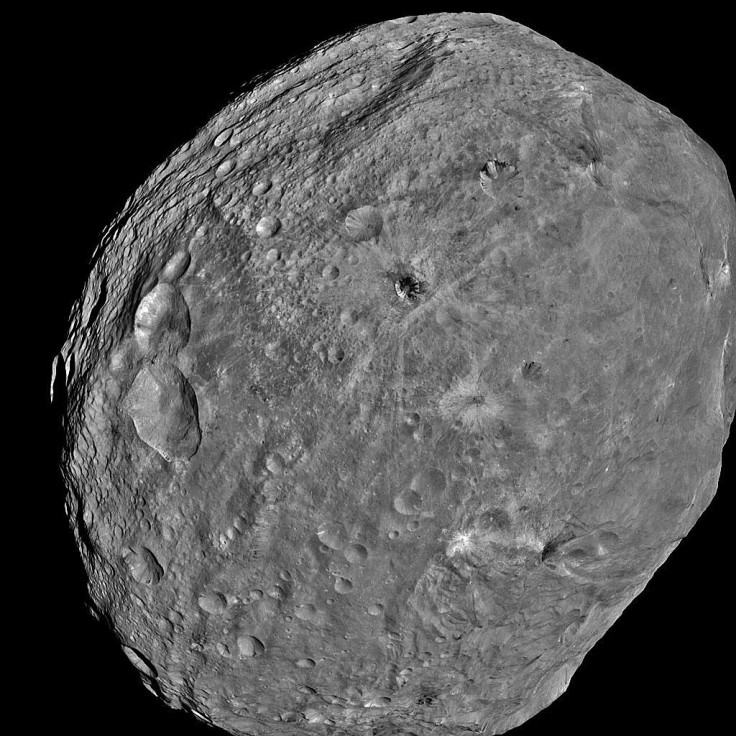
NASA scientists have significantly reduced any possibility of asteroid Bennu's feared collision course with Earth.
Using precision-tracking data from the U.S. space agency's OSIRIS-REx spacecraft, NASA researchers said chances of an impact are quite slim. OSIRIS-REx has helped scientists analyze future movements of the potentially dangerous asteroid through the year 2300.
Findings from the NASA study, titled "Ephemeris and hazard assessment for near-Earth asteroid (101955) Bennu based on OSIRIS-REx data," likewise helped researchers in determining total impact probability and predict orbits of other asteroids.
NASA has been conducting astronomical surveys that gather data in pinpointing asteroids and comets that would traverse near Earth with hazardous potential. Using the surveys, with OSIRIS-REx's help, researchers are able to refine and test orbital models to forecast where Bennu will make its close approach to Earth about a century from now.
Asteroid Bennu Hitting Earth Heightens With Changing Trajectory
While Bennu does not pose any danger to Earth in its near approach in 2135, the planet's gravity is expected to change the asteroid's trajectory, increasing the chances of a collision
This would depend on how Bennu's trajectory is impacted by Earth's gravity, gravitational influence of the other planets and asteroids, and what is called as the Yarkovsky effect (a small amount of acceleration generated as heat absorbed from the Sun is radiated back to space), CBS News noted.
According to the study lead author and Jet Propulsion Laboratory researcher Davide Farnocchia, this effect is "equivalent to the weight of three grapes." Per CBS, he said that this is driving Bennu's future motion and since its acceleration is persistent, the Yarkovsky effect would build up over time and become very significant by 2135.
Using NASA's Deep Space Network and other computer models based on OSIRIS-REx data, scientists reduced uncertainties in Bennu's orbit and came up with a total impact probability of about 1 in 1,750 or 0.057 percent through the year 2300.
Even as the chances of colliding with Earth is extremely low, the 500-meter Bennu remains as one of the most hazardous asteroids in our Solar System, together with another asteroid named 1950 DA.
OSIRIS-REx Spacecraft Offers Crucial Data on Bennu
OSIRIS-REx spent two years near Bennu, collecting data about its size, shape, mass and composition, all while monitoring its spin and orbital trajectory before returning to Earth. The spacecraft likewise collected rock and dust samples from the asteroid's surface, which it will bring back to Earth on September 24, 2023 for further scientific assessment.
Researchers pinpointed 26 half-mile wide "gravitational keyholes" along Bennu's path towards the 2135 near-Earth encounter. If the asteroid's trajectory, influenced by the Yarkovsky effect or other factors, would go through such keyholes, the Earth's gravity could put it on a collision course with Earth in 2182.
Precision tracking data from OSIRIS-REx allowed researchers to rule out 23 of the 25 keyholes to make an accurate assessment of Bennu's impact potential, which led to a potential impact probability of 1 in 2,700 or about 0.037 percent. That means there's over a 99 percent chance Bennu will miss Earth on the expected encounter on September 24, 2182.
Farnocchia told Fox News, "Overall, the situation has improved."
Meanwhile, NASA is also lining up its HAMMER or Hypervelocity Asteroid Mitigation Mission for Emergency Response study. It aims to look at the efficacy of utilizing spacecraft as a kinetic or nuclear asteroid deflector. NASA simulations reveal that 34 to 53 HAMMER strikes ten years before an asteroid like Bennu is set to collide with Earth are needed to set it off course.









